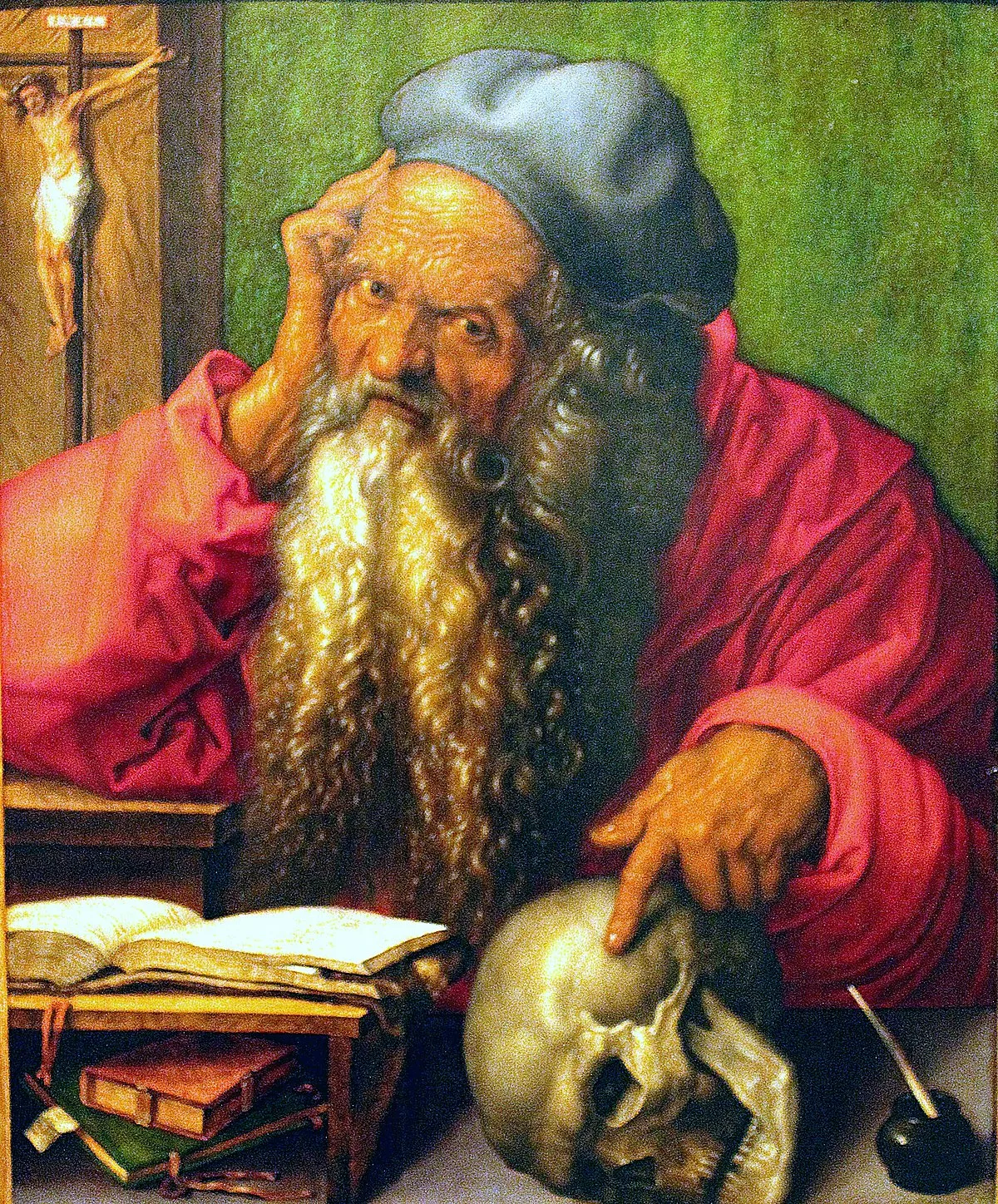 1.
1. Jerome is best known for his translation of the Bible into Latin and his commentaries on the whole Bible.

 1.
1. Jerome is best known for his translation of the Bible into Latin and his commentaries on the whole Bible.
Jerome attempted to create a translation of the Old Testament based on a Hebrew version, rather than the Septuagint, as prior Latin Bible translations had done.
Jerome was known for his teachings on Christian moral life, especially those in cosmopolitan centers such as Rome.
Jerome often focused on women's lives and identified how a woman devoted to Jesus should live her life.
Jerome made his first attempt to learn Hebrew under the guidance of a converted Jew; and he seems to have been in correspondence with Jewish Christians in Antioch.
Jerome updated the Psalter containing the Book of Psalms then in use in Rome, based on the Septuagint.
In Rome, Jerome was surrounded by a circle of well-born and well-educated women, including some from the noblest patrician families.
Jerome's letters were widely read and distributed throughout the Christian empire, and it is clear through his writing that he knew these virgin women were not his only audience.
Jerome was a scholar at a time when being a scholar implied a fluency in Greek.
Jerome knew some Hebrew when he started his translation project, but moved to Jerusalem to strengthen his grip on Jewish scripture commentary.
Jerome began in 382 by correcting the existing Latin-language version of the New Testament, commonly referred to as the Vetus Latina.
Jerome believed that the mainstream Rabbinical Judaism had rejected the Septuagint as invalid Jewish scriptural texts because of what were ascertained as mistranslations along with its Hellenistic heretical elements.
Some scholarship has cast doubts on the actual quality of Jerome's Hebrew knowledge detailed studies have shown that to a considerable degree Jerome was a competent Hebraist.
Jerome produced two onomastica which were commonly found in subsequent Bibles until the Reformation:.
Jerome warned that those substituting fake interpretations for the actual meaning of Scripture belonged to the "synagogue of the Antichrist".
Against Porphyry, Jerome identified Rome as the fourth kingdom of chapters two and seven, but his view of chapters eight and eleven was more complex.
Jerome held that chapter eight describes the activity of Antiochus Epiphanes, who is understood as a "type" of a future antichrist; 11:24 onwards applies primarily to a future antichrist but was partially fulfilled by Antiochus.
Jerome identified the stone cut out without hands as "namely, the Lord and Savior".
Jerome refuted Porphyry's application of the little horn of chapter seven to Antiochus.
Jerome expected that at the end of the world, Rome would be destroyed, and partitioned among ten kingdoms before the little horn appeared.
Jerome opposed the doctrine of Pelagianism, and wrote against it three years before his death.
Jerome, despite being opposed to Origen, was influenced by Origenism in his soteriology.
Jerome translated many biblical texts into Latin from Hebrew, Aramaic, and Greek.
Jerome's translations formed part of the Vulgate; the Vulgate eventually superseded the preceding Latin translations of the Bible.
Jerome showed more zeal and interest in the ascetic ideal than in abstract speculation.
Jerome is often depicted with a lion, in reference to the popular hagiographical belief that Jerome once tamed a lion in the wilderness by healing its paw.
Hagiographies of Jerome talk of his having spent many years in the Syrian desert, and artists often depict him in a "wilderness", which for West European painters can take the form of a wood.
Jerome is either shown in his study, surrounded by books and the equipment of a scholar, or in a rocky desert, or in a setting that combines both aspects, with him studying a book under the shelter of a rock-face or cave mouth.
Jerome is often depicted in connection with the vanitas motif, the reflection on the meaninglessness of earthly life and the transient nature of all earthly goods and pursuits.
Jerome is sometimes depicted with an owl, the symbol of wisdom and scholarship.